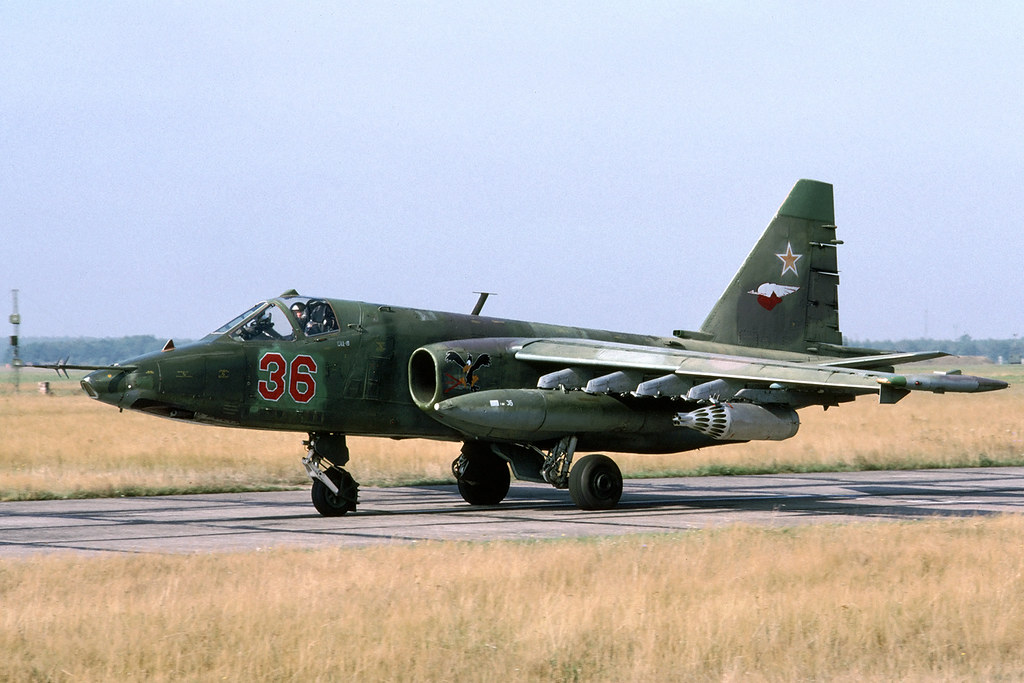
Russia’s Su-25 Frogfoot has been a mainstay in the world of military aviation for decades. Known by NATO as the “Frogfoot,” this Soviet-era jet has been compared to the American A-10 Warthog, both crafted for tank-busting and close air support roles.

Despite the Su-25’s lighter and faster design, the aircraft has faced challenges and setbacks, particularly in recent years during the conflict in Ukraine.

The Su-25 was born out of a 1960s Soviet Air Force competition to secure a next-generation close-support airframe. The Sukhoi T-8 prototype emerged victorious, later evolving into the Su-25.

This was the Soviet’s response to America’s A-10 Thunderbolt II, an advanced airframe designed to provide close air support. The Su-25 made its first flight in the early 1970s and completed its certification trials within five years.

Fitted with two R-95Sh non-afterburning turbojets, the Su-25 boasts a range of distinctive features. It includes a rangefinder and a DISS-7 doppler radar for night flight capabilities.

It also has an electronic warfare suite consisting of a Gardeniya radar jammer and an SPO-15 Sirena-3 radar warning receiver. The Frogfoot is capable of carrying a wide array of weapons, including Kh-23, Kh-25ML, and R-3D missiles, along with a formidable 30m AO-17A twin-barrel gun.

Despite its advanced capabilities, the Su-25 has faced significant challenges in combat. During the Soviet-Afghan War, the American-made Stinger missiles supplied to Afghan fighters proved deadly against the Frogfoot.

The Su-25 has also seen action in the Iran-Iraq War and the Abkhazia War, highlighting its vulnerability to shoulder-launched surface-to-air missiles (SAMS).

In the present day, the Russian Air Force operates roughly 250 Su-25s in various configurations. The Frogfoot has been involved in the ongoing conflict in Ukraine, and reports have indicated that this venerable aircraft has suffered the most losses over the last two years.

Russian state media confirmed last year that Su-25 and Su-34 fighter jets often work in tandem during combat operations, with the Su-34s providing cover for the low-altitude attack missions of the Su-25s.

Despite the setbacks, Moscow continues to rely on the Su-25, highlighting the airframe’s resilience and the Russian military’s dependence on its aging aviation assets.

Even after the collapse of the Soviet Union, many former Eastern Bloc nations inherited Su-25 regiments, and the aircraft has also been exported to air forces in Asia, the Middle East, Africa, and South America.

While the Su-25’s war record may not be described as stellar, its widespread use and continued presence in the skies demonstrate a certain rugged endurance that is emblematic of military aviation history.

In conclusion, the Su-25 Frogfoot’s journey from a Cold War-era innovation to a modern combatant has been fraught with challenges. Yet, it remains a significant piece of the tapestry that is the history of military aviation, continuing to serve despite the odds.

The Frogfoot’s story is far from over, as it adapts and survives in an era of sophisticated aerial threats and combat strategies.
Relevant articles:
– Su-25 Frogfoot: Russia’s Flying Tank Has Something The A-10 Can’t Match, The National Interest
– Su-25 Frogfoot ‘Flying Tank’: Russia Has Its Own Version of the A-10 Warthog, The National Interest

